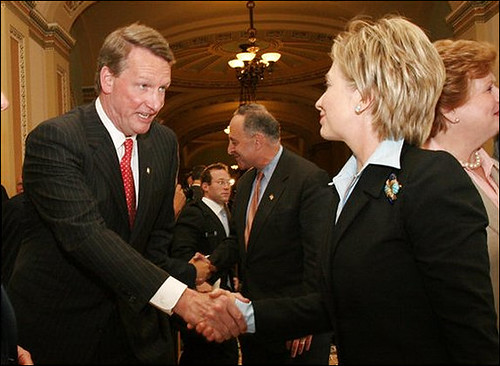 Yesterday I had the opportunity to sit in with Wards Autoworld reporters during an interview with General Motors CEO Rick Wagoner at his office atop the Renaissance Center in Detroit. The meeting required the CEO's handlers as escorts, special visitor passes, clearance through two security guards, ascending two different elevators, and permission from his personal secretary. But before we even entered the building, I knew how much planning and strategy went into such a high-profile interview.
Yesterday I had the opportunity to sit in with Wards Autoworld reporters during an interview with General Motors CEO Rick Wagoner at his office atop the Renaissance Center in Detroit. The meeting required the CEO's handlers as escorts, special visitor passes, clearance through two security guards, ascending two different elevators, and permission from his personal secretary. But before we even entered the building, I knew how much planning and strategy went into such a high-profile interview.Briefing the Soldiers:
Back at their office in Southfield, I was briefed on the intense scrutiny that created the questions. Two prep meetings were held with the three reporters scheduled to interview him. There were multiple interviewers because multiple stories would come of the interview, and each reporter was knowledgeable in a different area. They had to analyze what questions to ask, how to word them, and in what order to ask them. Although CEO's, I'm told, are generally not chasing after interviews, General Motors' Wednesday Announcement of a $39 billion loss probably played a role in how he answered questions. (Now I know why the meeting was pushed back a day.)
Reporters took steps not to step on each other's toes to answer questions by using subtle gestures and eye contact to signal who will speak next, and the only time one of them made a slight interruption, Wagoner made them know it. Eye contact and silence are key.
The "Tough Question" Thicket:

It's OK to ask tough questions, but you have to ask yourself "how tough is too tough?" If it took four months to get an interview with someone you haven't spoken ill about, how worth it is potentially pissing them off and shutting yourself out from them forever? On the other hand, don't go all soft; then you're just an unpaid public relations official. Save hot-button issues for the end.
A Lesson to Photographers:
The gossip around the journalistic campfire is that executives are a lot less candid about having their photo taken, and are in fact rather crabby about it. This was made crystal clear with Wagoner's handlers constantly reminding us of his secretary's "sore spot" for photo equipment, and the CEO's insistence that Ford CEO Alan Mulally instead be on the cover. According to Wards reporters, photographers have been asked to leave, and CEO's have walked out at will. Whether it be a hesitancy to put a smile on the face of a company facing huge cuts and losses, the executive fright of not being in control, or pure hatred of that annoying flash, photographers must keep in mind they are not welcome and be as fast and gentle as possible.
Getting in good with assistants:
All high-profile people have handlers- people who act as guard dogs from outsiders, particularly in the media. That sort of insulation demands the reporter not only build rapport with the person they're going to interview, but their assistant who, according to my dad, "decides whether you get the interview."
They have a higher turnover rate than the people they work for, so make a point of getting to know them as much as possible so you have a better shot when you need an interview.
In conclusion, tips like planning ahead, utilizing your other reporters as resources, eye contact, humility, and getting to know the assistants are key to any interview, not just the people with offices bigger than my apartment. Well, in that case I'd also recommend not getting too fixated on the picture of them with Muhammad Ali.

1 comment:
Great insight from your job shadow experience. I'd like to hear from some of your classmates about how their experience went too?
Post a Comment